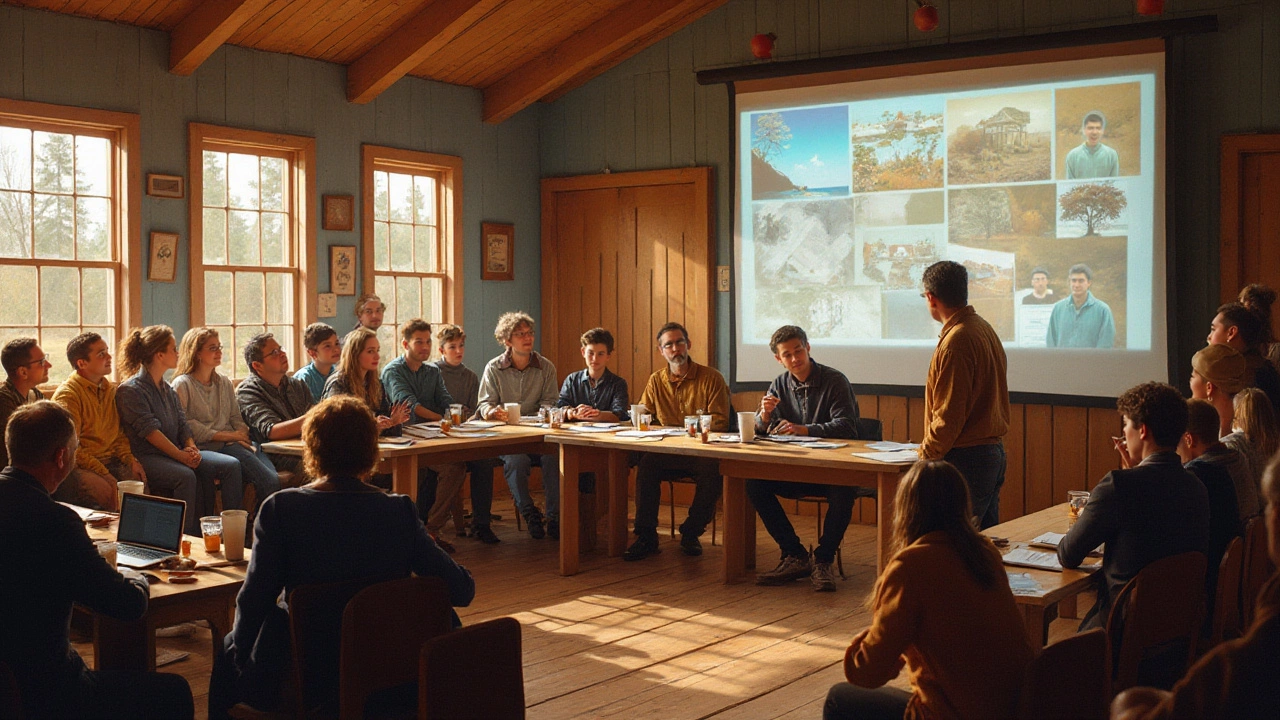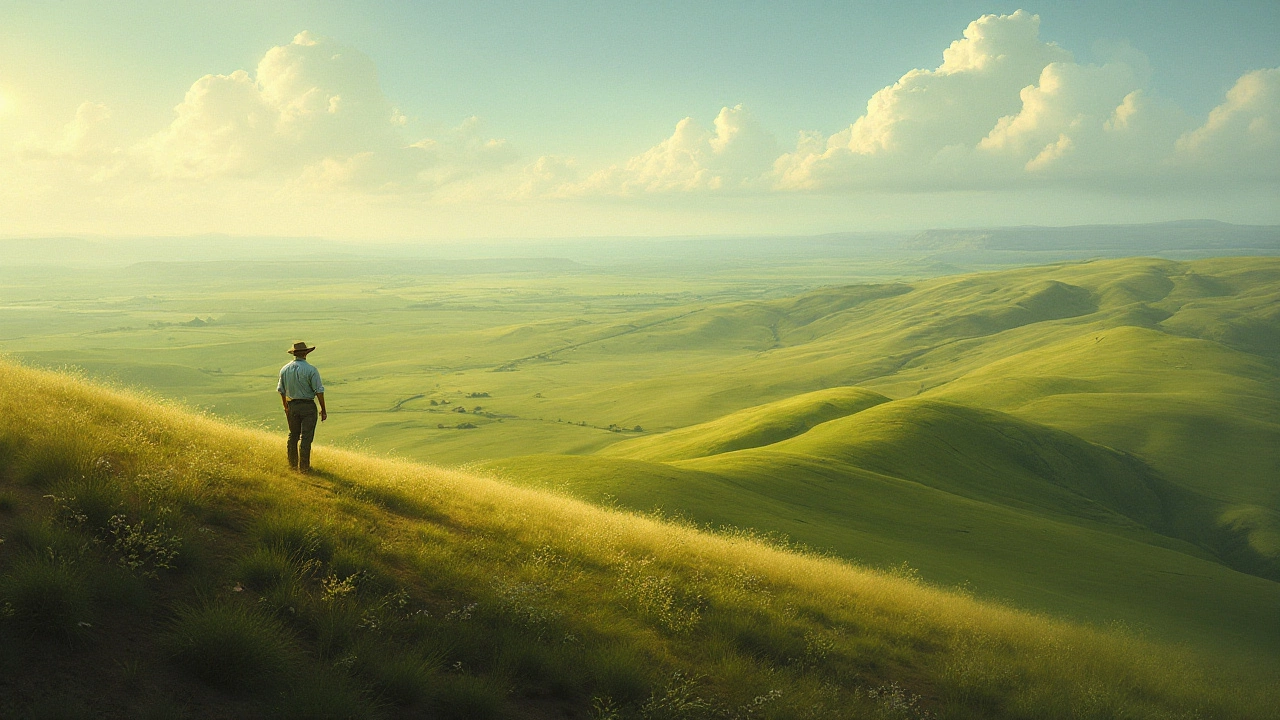Ever wondered if you could still stake your claim on a piece of the American frontier? The idea of acquiring free land, a concept rooted deep in the nation’s history, stirs the imagination of many. While the legendary Homestead Act of the 19th century opened up vast tracts of land to pioneers, giving away land isn't a common practice today. However, there are still unique opportunities available for those who are willing to dig a bit deeper.
Today, a blend of historical intrigue and modern-day initiatives provides intrepid explorers with a chance to realize their dream of land ownership in unexpected places. Towns across the United States have crafted programs aimed at revitalizing communities, sometimes offering plots of land for free, or at minimal cost, with certain conditions attached.
- The History of Free Land in the US
- Modern-Day Free Land Initiatives
- Challenges and Considerations
- Tips for Aspiring Landowners
The History of Free Land in the US
The concept of acquiring free land in America dates back to a time when the nation itself was still finding its footing. It was during the mid-19th century that the government, eager to stimulate westward expansion and development, introduced the Homestead Act of 1862. This groundbreaking legislation allowed any adult citizen, or intended citizen, to claim 160 acres of surveyed government land. In a bold promise, these acres could become theirs if they resided on the land for five years and improved it by building a dwelling and cultivating the area. The idea was simple and audacious—encourage settlement to turn vast untamed lands into thriving agricultural expanses.
The Homestead Act was remarkable not only for its generosity but also for the change it brought to the American landscape. By the turn of the 20th century, millions of acres had been parceled out, leading to the creation of new states and towns. Interestingly, the act attracted settlers from diverse backgrounds. Many immigrants, seeing this as an incredible opportunity, made their journey to the new world, adding layers of culture and diversity to the fabric of American society. But as history shows, the offer of free land couldn’t come without its complexities. The allocation often occurred at the expense of Native American tribes, who were forcibly removed from their ancestral lands, a reality that marked a somber chapter in the nation’s expansion.
Over the years, several amendments and new acts followed the original Homestead Act, each adapting the concept to fit the nation’s evolving needs. The Timber Culture Act of 1873, for example, targeted lands considered less arable than their counterparts. Settlers could obtain additional land if they agreed to plant trees on a portion of it, promoting reforestation and sustainability. Despite these new legislations, the standard requirements remained. The lure of free or cheap land held strong, although, by the time the act was repealed in 1976 (or 1986 in Alaska), most of the valuable land had already been claimed. An intriguing fact is that even a century after the first mass distribution, a handful of determined Americans continued to acquire homesteads, right up until the final claims.
"The Homestead Act remains a testament to American ingenuity and risk-taking," remarked a historian from a noted academic institution. "While it spurred agricultural and economic growth, its legacy is incomplete without acknowledging who paid the price for this progress."
Fast forward to today, historians and land enthusiasts often reflect on the Golden Era of free land in America with a mix of nostalgia and critical analysis. It was a time that shaped not just the geography but the ethos of the nation—land as a symbol of opportunity and a means to a new beginning. The early pioneers, with nothing but determination and the promise of self-sufficiency, forged communities out of wilderness, paving the way for the vibrant history of American settlement. This past raises a curious question of relevance in modern times: could there still be opportunities to find, claim, or even innovate upon the age-old prospect of free land in the ever-changing landscape of the United States?

Modern-Day Free Land Initiatives
In recent years, a few towns across the United States have gotten creative about population decline and economic stagnation. While the days of vast, open homesteads may have faded into memory, some pockets of the country are reviving the concept of offering land, sometimes referred to as free land USA, to entice new residents. This modern iteration often appears in less populated regions, where local governments or private initiatives aim to breathe life back into dwindling communities.
One such initiative can be found in the small town of Lincoln, Kansas. This picturesque Midwestern town offers free residential lots to those willing to build and live upon these lands. As with many of these initiatives, there are stipulations involved such as building a home within a specific timeframe. This not only boosts the local economy by attracting builders and contractors but also strengthens the social fabric of the community by bringing in new residents.
These initiatives aren't limited to residential plots. Places like Marne, Iowa, offer similar opportunities with conditions like submitting a plan to build a house and starting construction within a specified time. The rationale behind these offers of claim land America is clear—professionals, young families, and entrepreneurs can inject fresh energy, ideas, and a consumer base into these towns. Such schemes simultaneously provide newcomers with a cost-efficient entry to homeownership, especially attractive during times of rising property values and economic uncertainty.
As James Stark, a spokesperson for the City of Lincoln pointed out, "Free land is just the beginning. It's about building futures and forging lasting community ties."
For those looking to embark on homesteading adventures or simply to lay down roots without breaking the bank, these initiatives hold a unique allure. The catch, if it can even be called that, is often simple adherence to community guidelines, willingness to commit to place-based living, and in some instances, a small fee for infrastructure development.
Understanding the Process of Acquiring Free Land
While the idea of homesteading in present-day America might sound like a dream, there's a necessary process, intricately designed to benefit both parties involved. Interested individuals often start with a visit to the local government's website or offices, where detailed instructions and checklists are common. These lists typically outline expectations, like the timeframe for starting and completing construction, types of allowable structures, and sometimes reviewing a public commitment to community engagement.
Furthermore, potential settlers might find themselves needing to present viable financial plans or demonstrate their capacity to maintain the property after acquisition. This ensures that only those genuinely interested and capable will utilize the opportunity. While these free land programs are not as pervasive as traditional real estate models, the sense of opportunity and community they foster offers a truly unique path.
With the growing interest in sustainable living and community rebuilding, more areas might embrace this trend, leading to diverse offerings in the future. However, it requires research, patience, and commitment—not just to the land itself but to the community and the future it envisions. As the timeless appeal of owning a piece of land persists, these free or low-cost programs present themselves as modern solutions to age-old dreams.

Challenges and Considerations
Embarking on a journey to claim free land in America might seem like a dream come true, but this path is often strewn with hurdles that require careful thought and preparation. One of the first challenges you may face is understanding and navigating the legal landscape. In most instances, obtaining even a small plot of land involves a profound understanding of local zoning laws, building codes, and property regulations. These legal intricacies can vary significantly from state to state, and even within different counties or municipalities, thus necessitating local legal counsel to guide one's steps efficiently.
While free or nearly-free land opportunities might be available, they often come with strings attached. Many programs set forth obligations like building a house within a specified timeframe or committing to reside on the property for several years. These obligations are crafted to ensure that the opportunity contributes positively to community development rather than becoming another abandoned lot. This commitment can be daunting for those who aren't prepared to settle down immediately or lack the resources to embark on construction. Just ask anyone who's attempted this path before, and they'll often cite financial planning as a crucial component of meeting these conditions. "Planning and commitment are key to successfully claiming and maintaining free land," says one expert offering advice on such ventures.
Location is another critical consideration that heavily influences the feasibility of claiming free land opportunities. Many of these plots are located in rural or economically lagging areas, often far removed from bustling urban centers. This could mean an idyllic countryside retreat for some, but for others, it might translate to limited access to immediate employment opportunities, healthcare, or educational facilities. Potential claimants should weigh the benefits of seclusion against their lifestyle needs, long-term goals, and readiness to adapt to a potentially slower-paced life.
Infrastructure is another aspect that can't be overlooked. These areas might lack essential services such as paved roads, public transportation, or even reliable internet access—an amenity considered indispensable in today's interconnected world. Residents might find themselves required to invest personally in creating a livable environment. Considerable effort might be needed to install sustainable utilities, especially if the area's infrastructure is primitive or non-existent. All this may translate to a substantial financial commitment that must be considered carefully.
Moreover, anyone considering pursuing free land USA needs to be prepared for the uncertainties of rural living. Sometimes, you might need to plan for unpredictable climate conditions or seasonal changes that could impact your ability or desire to reside long-term. Wildlife and insects endemic to the region can also pose challenges to budding landowners not accustomed to dealing with such elements on a daily basis. Thus, researching the locale's natural ecosystem goes hand in hand with deciding which land offers are suitable.
Last but certainly not least, potential landowners must factor in the broader economic conditions. Did you know, historically, areas offering free land might be economically challenged or experiencing population decline? An interesting data point from recent reports highlighted that around 75% of small towns providing free land have witnessed around a 12% population decline in the last decade. These figures underscore the need to evaluate long-term community sustainability and personal growth prospects. Overall, assessing these socioeconomic factors is as crucial as the land's physical characteristics.
"Understanding the full scope of what comes with acquiring free land is vital," explains a researcher on rural development. "It's not just about the land; it's about community engagement, resourcefulness, and long-term vision."

Tips for Aspiring Landowners
Embarking on the journey to claim your own patch of free land can be an exhilarating, yet daunting experience. First and foremost, it’s essential to dive into research about potential free land USA markets. Different areas will have distinct regulations, incentives, and requirements. This means that staying informed about state-specific legislation and incentives offered by small towns is crucial. Local government websites and community message boards are invaluable resources for uncovering the latest opportunities.
Once you’ve found a prospective piece of land, understanding the fine print is a must. Often, there might be certain commitments attached, such as building a home within a certain time frame or contributing to the local economy through a business venture. It’s a two-way street; the community invests in you, and you need to ensure their investment pays off by abiding by the outlined conditions. One key tip is to connect with people who have successfully claimed land. They can provide insights and real-life experiences that are worth their weight in gold.
Next, it’s beneficial to plan your finances meticulously. While the land itself might be free or low-cost, there are often ancillary expenses that new landowners overlook. These can include costs for infrastructure development, utility connections, and even legal fees. Setting a realistic budget that considers all possible expenditures can make the transition smoother. Moreover, it’s wise to explore potential grants or financial assistance programs that might be available specifically for homesteading or rural development.
Before jumping in, acknowledging the possible challenges that come with claiming land is integral. Rural areas can sometimes lack the amenities and conveniences of urban locales. Basic facilities like healthcare, schooling, and even grocery stores might not be at a stone's throw distance. It is essential to weigh these aspects against your lifestyle preferences and long-term plans. As you evaluate these factors, having a contingency plan in place ensures that you’re prepared for unexpected hurdles along the way.
"The key to thriving on new land isn’t just about what you build, but how you build relationships within the community," says renowned homesteading expert Alex Marshall. This highlights the fact that the social dynamics of rural living are as critical as meeting the material conditions. Making an effort to integrate into the community can lead to unexpected support networks and friendships.
Another practical approach is to establish clear, sustainable goals. Start small and expand as you grow more comfortable and confident. This could mean initiating with basic agriculture and then branching out into larger farming ventures or launching a local business. Be patient with the process; pioneering your own land is as much a personal journey as it is a financial investment. Remember, having a well-thought-out plan doesn’t only enhance your chances of success—it makes the journey rewarding in myriad ways.
Finally, keeping adaptability in mind allows you to pivot when circumstances change, whether that involves adjusting your initial plans or reassessing your long-term vision. A flexible mindset is essential for finding success in a landscape that’s as vast and varied as the free land USA presents.
| Challenge | Consideration |
|---|---|
| Infrastructure | Budget for development costs such as roads and utilities. |
| Community Terms | Be aware of community obligations like business launches. |





